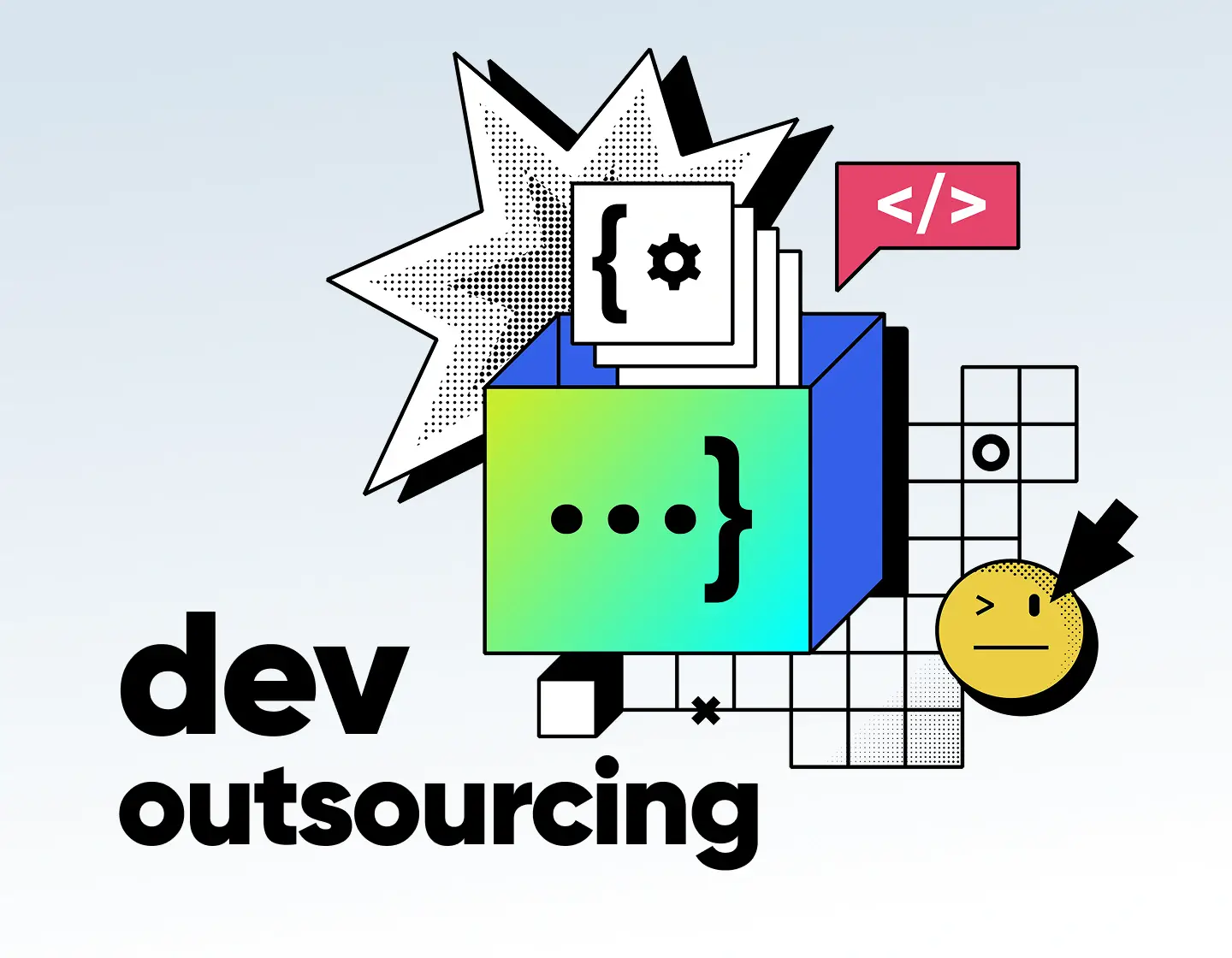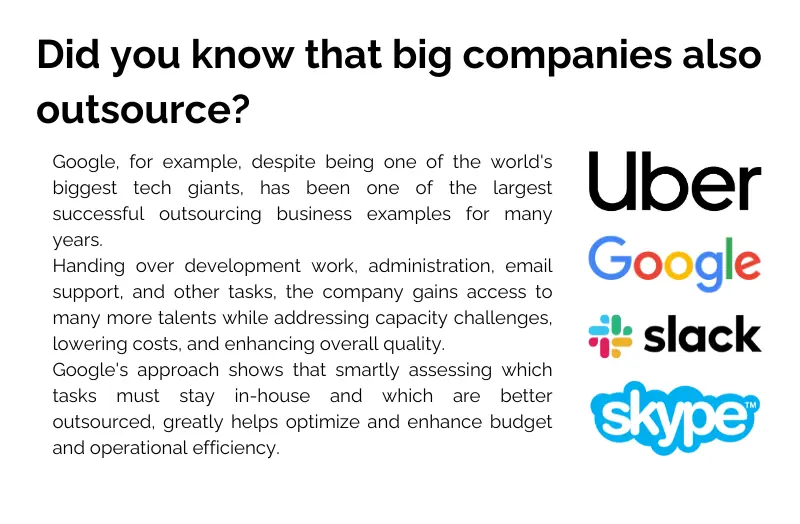Outsourcing software development – some swear by it, others have horror stories, so, is it really worth it? Well, that depends on who you ask… and how you do it.
Here’s the thing: outsourcing can work beautifully if you approach it the right way. That’s why, today, I’m going to lay it all out for you – the benefits, the common pitfalls and how to avoid them, and last but not least how to find a development team that delivers. No fluff, no sugarcoating – just real, practical advice to help you make the right call. Sounds good? Let’s get into it.
When to outsource software development
Knowing when to bring in an external development team rather than keeping everything in-house is a key factor for successful outsourcing. If you’re working on a project that requires specialized skills beyond your team’s skill set, outsourcing can fill those gaps without the long-term commitment of hiring full-time developers.
It’s also a good option when you need to scale quickly – for example, when having more work than you can handle or needing to speed up development without exhausting your in-house team.
Cost is another major factor. Maintaining an in-house development team isn’t just about salaries – it’s also about software, infrastructure, and ongoing training. If those costs outweigh the benefits, outsourcing can offer a more flexible, budget-friendly alternative.
However, outsourcing isn’t just about saving money; it’s also about efficiency. If your designers are stuck waiting on internal dev resources, slowing down project timelines, an external team can help keep things moving without bottlenecks.
But of course, outsourcing isn’t without its challenges. Let’s take a closer look at the pros and cons to see if it’s the right fit for you.
Pros of software development outsourcing
Outsourcing software development is more than a smart, cost-cutting move – it’s about unlocking new (and better) opportunities that might not be possible with an in-house team alone. Here are some of its biggest advantages:
1. Access to top talent
Instead of being limited to local hires, you can have at your disposal a global pool of developers with the exact skills you need. Whether it’s complex backend systems or the latest front-end frameworks, you get the right expertise without the hassle of hiring in-house.
2. Scalability on demand
It doesn’t matter whether you need extra hands for a big project or want to move faster without overloading your in-house development team, outsourcing lets you scale up (or down) as needed. No long-term commitments, no unnecessary payroll costs – just the flexibility to adapt.
3. Cost efficiency
While outsourcing isn’t always cheaper, it can be smarter financially. Instead of paying for salaries, benefits, and infrastructure, you’re only paying for the work that needs to be done. Plus, many agencies find that outsourcing allows them to take on more projects without increasing fixed costs.
4. Faster project turnarounds
A dedicated outsourced team can focus solely on development, meaning fewer delays and a more streamlined production process. With the right workflows in place, your agency can move projects from design to launch much faster.
5. More room to focus on what you do best
Instead of getting bogged down in the technical side of things, your team can stay focused on strategy, design, and client relationships – while your outsourced developers handle the coding. It’s a win-win.
Of course, outsourcing isn’t perfect. While it offers plenty of advantages, there are also potential challenges to navigate. Let’s take a look at some common pitfalls, and, more importantly, how to avoid them.

Cons of outsourcing software development (and how to avoid them)
Outsourcing can be a huge advantage, but it’s not always smooth sailing. If you’ve ever dealt with missed deadlines, communication gaps, or code that didn’t match your vision, you know exactly what I’m talking about. The key isn’t avoiding outsourcing altogether; it’s knowing where the challenges lie so you can sidestep them. Here’s what to watch out for:
1. Quality control can be tricky
Not all outsourcing partners are created equal. Some deliver top-tier work, while others… not so much, meaning you might end up with code that’s messy, inefficient, or just doesn’t align with your design team’s vision.
2. Communication gaps can cause headaches
Time zones, language barriers, and different work styles can lead to misalignment, creating frustrating delays and endless revisions.
3. Hidden costs can add up
While outsourcing can save money, unexpected expenses (the so-called hidden costs) – like fixing poor-quality code, delays, or extra project management time – can sneak up on you.
4. Less control over the process
Unlike an in-house team that you can check in with daily, an outsourced team works on their own schedule and priorities, which can make you feel out of the loop.
As you see, as long as you know how to navigate the challenges of outsourcing software development, they are not that big of a deal. Let’s see now what the most common outsourcing arrangements are.
Software development outsourcing models
Depending on your needs, budget, and long-term goals, the different outsourcing models can offer different advantages. Here’s a breakdown of the three most common models:
1. Dedicated team model
The dedicated team model is a popular outsourcing approach. Think of this as your remote in-house crew. With this model, you get a group of developers who work exclusively on your projects, acting as a natural extension of your agency. It’s ideal for long-term collaborations where consistency and deep integration with your workflows matter.
Prepare for: May have higher costs compared to other models, as you’re essentially hiring a remote team full-time.
2. Project-based model
This is the most straightforward outsourcing approach – you hire a team for a specific project with a fixed scope, budget, and timeline. Once the project is completed, the partnership ends.
Prepare for: Less flexibility – if your project needs change mid-way, renegotiating terms can be tricky.
3. Outstaffing model
In this setup, you “rent” developers from an outsourcing provider, but they work under your direct management. Unlike a dedicated team, these developers aren’t exclusive to you, but they integrate with your existing team as needed.
Prepare for: Management overhead – since you’re in charge of leading the developers, you’ll need to ensure proper oversight and collaboration.
Choosing the right outsourcing partner
The difference between a smooth, successful collaboration and a frustrating, time-consuming mess often comes down to who you hire. So, what should you look for when choosing an outsourcing partner? Here are the key factors that separate good software development companies from the great.
1. Relevant experience & technical expertise
A team might be full of talented developers, but if they don’t have experience with projects like yours, there’s a higher risk of misalignment. Look for an outsourcing partner with a proven track record in your industry. Ask for case studies, portfolio samples, and client references to get a better sense of their capabilities.
2. Strong communication & collaboration skills
Technical skills are important, but even an experienced team can struggle with communication and your project can easily derail. So, look for a partner that:
- Responds promptly and clearly
- Proactively provides updates
- Asks the right questions to understand your vision
- Uses collaboration and communication tools to stay aligned
Smooth and effective communication is at the heart of seamless project development and means you’ll have fewer troubles down the road. Regular communication channels, such as daily or weekly meetings, can help ensure the project is on track.
3. Alignment in work culture & values
Outsourcing isn’t just about handing off work – it’s about forming a partnership. So find a partner that shares your work culture and commitment to quality, creativity, and problem-solving. A quick test? Pay attention to how they approach initial discussions – do they just take orders, or do they actively engage and offer ideas?
4. Reliable security & data protection measures
If your project involves handling sensitive data, security should be a top priority. Ask potential partners about their security protocols, data protection policies, and compliance with industry standards like GDPR or ISO certifications. A reliable outsourcing partner should have clear measures in place to protect your project from breaches or intellectual property risks.
5. Scalability
Your development needs today might not be the same six months from now. A good outsourcing partner should be able to scale up when your workload increases – without sacrificing quality, of course. Look for teams that have enough resources to grow with you, whether that means adding more developers to a project or adjusting their services based on your business needs.
6. Transparent pricing & contact terms
No one likes hidden fees. When asking for a quote, get a clear breakdown of costs, payment structures, and contract terms upfront. If a company is vague about pricing or hesitant to discuss revisions and additional costs, that’s a red flag.
Taking the time to research your development outsourcing partner properly can save you a ton of stress (and money) in the long run. Now, let’s talk about where to find the best outsourcing teams – and how much you can expect to pay.
Where to outsource development to
Once you’ve nailed down what you’re looking for in an outsourcing partner, the next big question is: Where to actually find them? And just as important – which regions offer the best balance of quality, cost, and reliability?
Where to find software development outsourcing companies:
- Tech-specific platforms – Websites like Clutch and TopTal list companies based on reviews, case studies, and expertise.
- Freelance marketplaces – If you need individual software developers, Upwork, Fiverr Pro, and Arc.dev can be great options.
- Referrals & networking – Word of mouth is still one of the best ways to find reliable partners. Ask within your industry or design community for recommendations.
- Industry conferences & meetups – Such events often showcase top-tier development firms looking for collaborations.
The best regions to outsource to and how much it will cost you:
The right region for outsourcing depends on what you prioritize – whether that’s cost savings, time zone alignment, or access to specific expertise. Here’s a quick breakdown:
- Eastern Europe (Bulgaria, Ukraine, Poland, Romania): $30 – $80/hour; High-quality developers, strong technical expertise, solid English proficiency, good time zone overlap with the U.S. and Europe, but rates can be higher than in some other regions.
- Asia (India, Vietnam, Philippines, Pakistan): $15 – $50/hour; Large talent pool but there are potential communication and time zone challenges; Lower development costs but quality can vary – requires careful research.
- Latin America (Argentina, Brazil, Mexico, Colombia): $25 – $75/hour; Great time zone alignment for U.S. businesses, growing tech hubs, strong collaboration skills; Rates are climbing as demand increases.
- North America & Western Europe (U.S., Canada, UK, Germany, Netherlands): $80 – $200/hour; Top quality, seamless communication, and cultural alignment but it’s the most expensive option – often not cost-effective for outsourcing.
Where to outsource your software development ultimately depends on your budget, preferred time zones, and the type of work you need done.
Bottom line
So, is software development outsourcing worth it? Absolutely – but only if you do it right. The key is knowing when to outsource, choosing the right model, and carefully choosing your development partners.
Done well, outsourcing development can help your agency scale, improve efficiency, and access top-tier talent without the overhead of a full-time in-house team. But skipping the research phase? That’s where things can go south. Take the time to find the right partner, set clear expectations, and build a strong collaboration process – and you’ll turn outsourcing from a cost-cutting measure into one of your strongest advantages.
If you’re looking for a development partner that truly gets your needs, htmlBurger is a solid choice. They specialize in working with creative teams, offering reliable, top-quality, and easy-to-use web development services. Plus, they offer a risk-free tryout and can scale with your needs – whether a one-off project or an ongoing partnership. Give them a try, you won’t regret it!
Interested in more about growing an agency?











